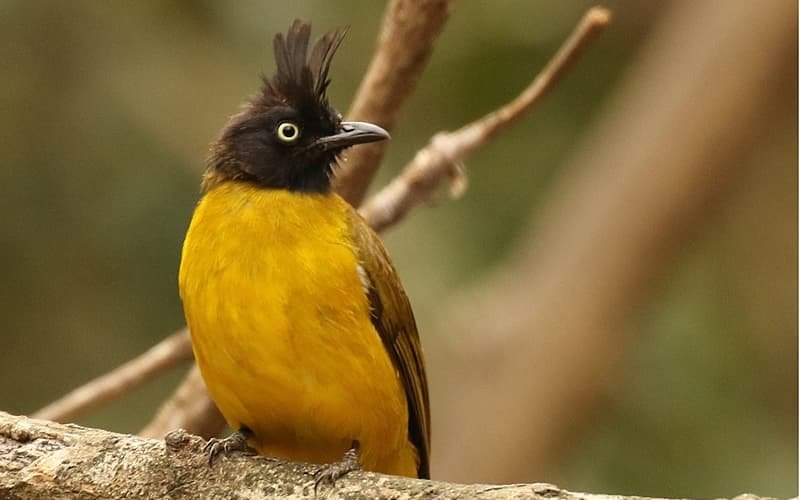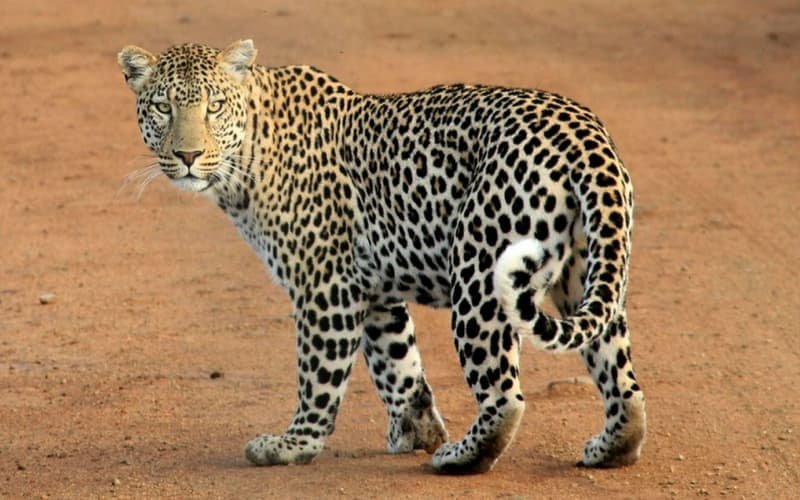Explore the fascinating world of the Sri Lankan Sloth Bear, a unique and endangered species found only in Sri Lanka. Discover its physical traits, behavior, habitat, and the conservation efforts needed to protect it.
Introduction to the Sri Lankan Sloth Bear
The Sri Lankan Sloth Bear (Melursus ursinus inornatus), a subspecies of the Indian Sloth Bear, is one of Sri Lanka’s most intriguing and elusive wildlife species. Found only in Sri Lanka, it is an endangered species with an estimated population of just a few hundred individuals. Known for its shaggy black fur and long, bushy tail, the Sloth Bear is an important part of the island’s diverse ecosystem. However, it is also under significant threat due to habitat destruction, human-wildlife conflict, and poaching. This article explores the physical characteristics, behavior, and habitat of the Sri Lankan Sloth Bear, as well as the conservation efforts underway to protect it.
Physical Characteristics of the Sri Lankan Sloth Bear
The Sri Lankan Sloth Bear stands out for its distinct appearance. The bear’s coat is thick and shaggy, mostly black, with a cream-colored patch on its chest that resembles an inverted “V.” One of the most unique features of this bear is its long prehensile lips, which can move independently to help gather food, and its long tongue, which it uses to extract insects from tree trunks or underground burrows.
Adult males can weigh up to 140 kg, while females are generally smaller. Their height at the shoulder ranges from 80 to 100 cm. The bear’s sharp, hooked claws help it climb trees and dig for food, especially insects like termites, ants, and beetles, which constitute the majority of its diet. These claws also aid in the bear’s unique foraging style—digging into the ground or bark to uncover insect colonies. Despite their somewhat awkward appearance, the Sloth Bear is well-adapted for its environment and survival.
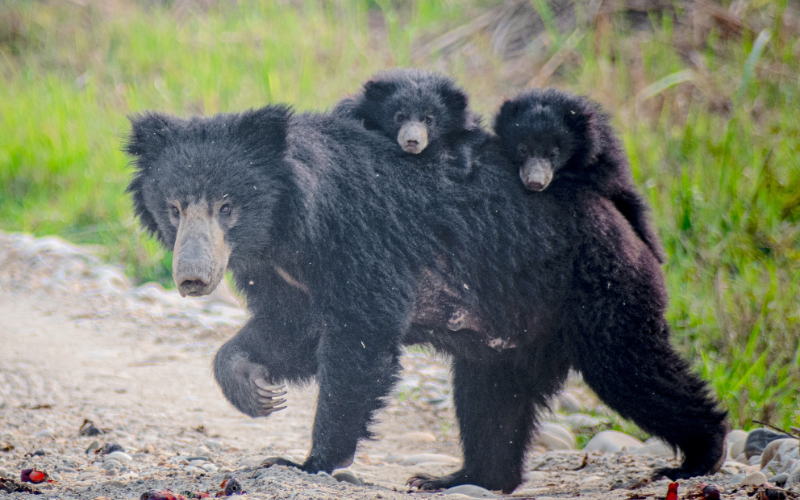
Habitat of the Sri Lankan Sloth Bear
The Sri Lankan Sloth Bear predominantly inhabits the island’s dry forests, scrublands, and occasionally, wet forests. These habitats are found in the central and southern parts of the country, with notable populations in national parks like Yala, Wilpattu, and Uda Walawe. The bear prefers areas with dense vegetation, which provides shelter and a rich source of food. The island’s unique climate and terrain offer the bear a perfect environment, but increasing human activity and urban expansion are leading to the destruction of their natural habitat.
Deforestation, agriculture, and infrastructure development are major contributors to habitat loss. As Sri Lanka’s human population grows, the pressure on wildlife increases, resulting in the fragmentation of the bear’s natural habitat. This not only disrupts their food supply but also leads to dangerous encounters between the bears and humans, as they are forced to venture closer to human settlements in search of food.
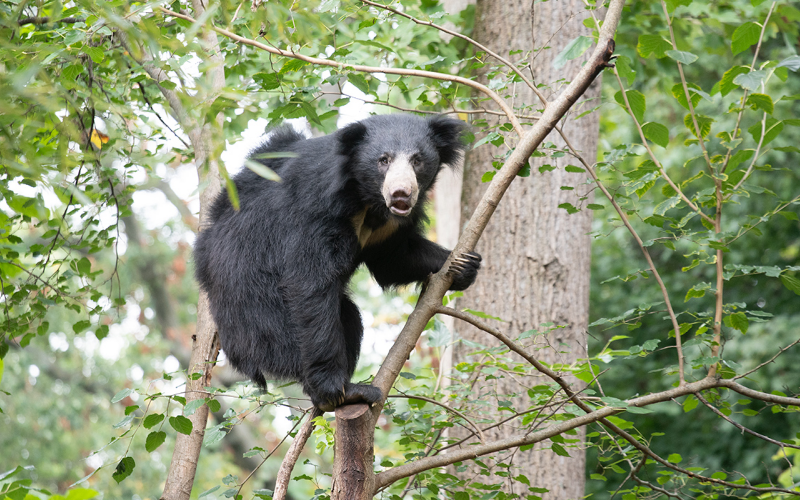
Behavior and Diet of the Sri Lankan Sloth Bear
The Sri Lankan Sloth Bear is primarily nocturnal, spending most of its active hours at night. It has a solitary nature, and while it is capable of defending itself when threatened, it is generally shy and elusive. The bear’s diet mainly consists of termites, ants, honey, and fruits, although it will also feed on small vertebrates if necessary. Their long, flexible lips and tongue are perfectly suited for extracting insects from the ground or tree bark, making them highly specialized feeders.
In addition to its insectivorous diet, the Sloth Bear plays a crucial role in the local ecosystem. It helps control the population of insect pests, contributing to the health of the forest. Its foraging behavior also aids in seed dispersal, which supports the growth of vegetation. By digging for insects, it helps aerate the soil, which benefits plant growth. Despite their somewhat clumsy appearance, these bears are integral to maintaining the ecological balance of their environment.
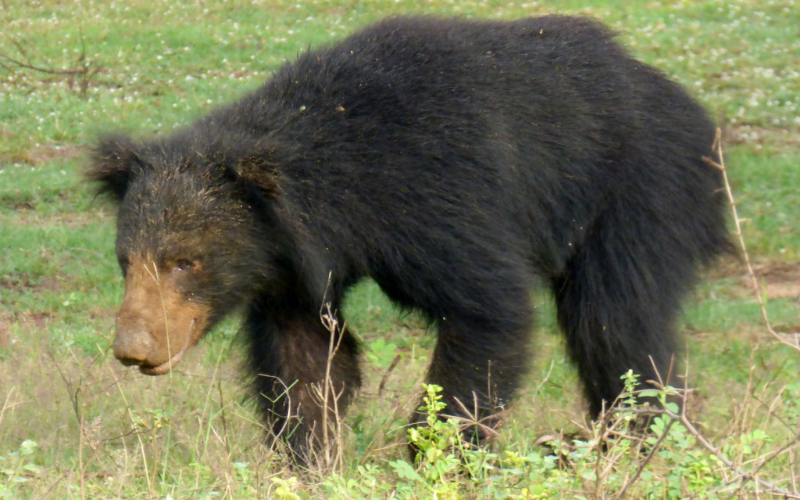
Conservation Status and Challenges
The Sri Lankan Sloth Bear is listed as a vulnerable species due to habitat loss, poaching, and human-wildlife conflict. The primary threat to their survival is habitat destruction caused by deforestation and the expansion of agriculture. As humans encroach on the bear’s territory, conflicts between the species and local communities often arise. Bears are sometimes killed in retaliation for raiding crops or homes, and their habitats are destroyed to make way for urban development.
Conservation efforts to protect the Sri Lankan Sloth Bear focus on preserving and restoring its natural habitat. Sri Lanka’s national parks, such as Yala and Wilpattu, are essential in offering a safe refuge for the bears. However, these protected areas are increasingly surrounded by human settlements, which can lead to conflicts. Strategies for reducing human-wildlife conflict include creating wildlife corridors, educating local communities about the importance of conservation, and promoting sustainable farming practices that reduce the likelihood of bears entering human settlements.
In addition to habitat protection, Sri Lanka’s Department of Wildlife Conservation has been involved in research and monitoring programs to better understand the species and develop effective management plans. The use of camera traps, tracking devices, and field surveys has helped gather vital data about the bear’s behavior, population numbers, and habitat use. These efforts are crucial in ensuring that the Sri Lankan Sloth Bear has a future in the wild.
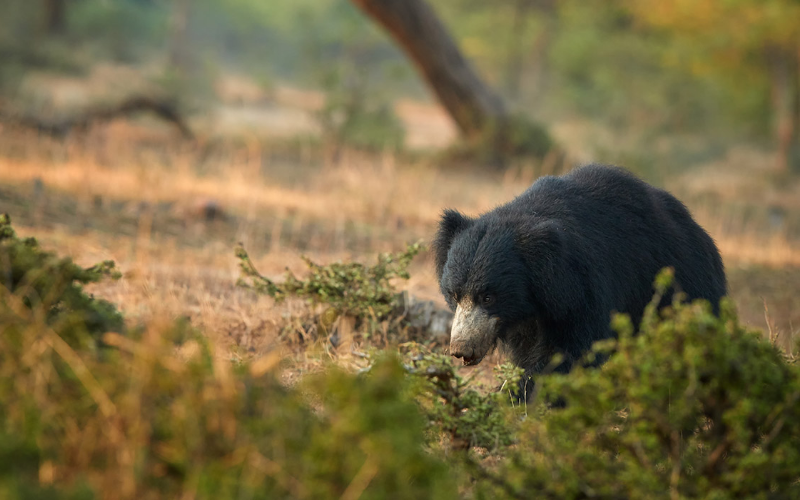
Sri Lankan Sloth Bear Facts
They have a cream-colored muzzle, large prehensile lips, and a long tongue. Their paws are equipped with well-developed hook-like claws that enable them to climb trees and dig for termites. The head and body grow up to 6 feet in length and can weigh up to 140kg for a male and 95 kg for a female.
Where to Spot Sri Lankan Sloth Bear?
The Sri Lankan Sloth Bear can be found in various habitats across Sri Lanka, including dry forests, scrublands, and grasslands. Some of the national parks where the sloth bear can be found include Yala National Park, Wilpattu National Park, and Horton Plains National Park. However, as with many wildlife species, the Sri Lankan Sloth Bear is endangered and its population is under threat due to habitat loss and hunting. Therefore, it is important to practice responsible tourism when visiting these areas and to support conservation efforts to ensure the protection of the sloth bear and its habitat. A guided tour with a reputable wildlife tour operator, such as Ceylon Wild Tours, can offer a safe and sustainable way to experience the beauty of the Sri Lankan Sloth Bear and other wildlife species in their natural habitats.
How You Can Help Protect the Sri Lankan Sloth Bear
As a tourist or local resident, you can contribute to the conservation of the Sri Lankan Sloth Bear by supporting wildlife protection initiatives and being mindful of your impact on the environment. Visiting national parks such as Yala, Wilpattu, and Uda Walawe not only allows you to see these incredible animals in their natural habitat but also provides income that supports conservation efforts.
Additionally, promoting sustainable agricultural practices, supporting reforestation projects, and spreading awareness about the importance of wildlife conservation are vital actions that can make a difference. By minimizing human-wildlife conflict and protecting the bear’s natural environment, we can help ensure that future generations will be able to witness the beauty and significance of the Sri Lankan Sloth Bear.
Conclusion
The Sri Lankan Sloth Bear is one of the most unique and fascinating animals found on the island. Its distinctive appearance, behavior, and ecological role make it an essential part of Sri Lanka’s biodiversity. However, with increasing threats from habitat loss, poaching, and human-wildlife conflict, the future of this incredible species is uncertain. Through concerted conservation efforts, both at the governmental and community levels, we can ensure that the Sri Lankan Sloth Bear continues to thrive in its natural habitat. Supporting these initiatives, whether through responsible tourism, habitat protection, or education, is crucial for the survival of this endangered species.
Best Tours in Sri Lanka
Discover the best tours in Sri Lanka, where every journey unveils a new wonder. Explore ancient ruins, lush tea plantations, golden beaches, and vibrant wildlife. Experience the magic of this tropical paradise like never before!
Best Hotels
Experience luxury and comfort at the best hotels in Sri Lanka. From serene beachfront resorts to charming hill-country retreats, enjoy world-class hospitality, stunning views, and unforgettable stays tailored to your every need.🛌
Flight Booking
Looking to take off on your next adventure? Book your flights with ease and confidence! Whether it’s a dream vacation, a quick getaway, or a business trip, our flight booking service offers unbeatable deals, flexible options, and seamless convenience. Compare airlines, find the best routes, and secure your tickets in just a few clicks. With 24/7 customer support and exclusive discounts, the skies have never been friendlier. Start your journey today and make every mile memorable! ✈️



